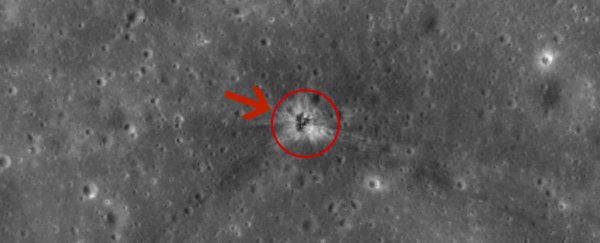A researcher has finally found the impact crater where the Apollo 16 rocket booster crashed on the Moon, almost 44 years later.
The Apollo 16 mission was the fifth NASA mission to land humans on the Moon and return them safely to Earth, and as one of the crew's experiments, they crashed their Saturn V stage 3 booster onto the Moon's surface after it had propelled them safely into lunar orbit.
The experiment allowed them to perform seismic measurements to try to investigate the interior of the Moon. Unfortunately, a malfunction meant that the tracking data for the rocket got lost, so there's been long-standing uncertainty as to exactly where the booster crashed.
But now Jeff Plescia, a physicist from Johns Hopkins University, who's become an expert at locating lost hardware on extraterrestrial surfaces, used high-resolution images produced by the LROC system on board NASA's Lunar Reconnaissance Orbiter to find the missing impact crater.
"I did finally find the Apollo 16 SIVB crater," Plescia told Leonard David over at Inside Outer Space. "It looks like the others, but its position was much more poorly defined since the tracking was lost prior to impact."
The Apollo 16 mission was the second last Apollo program, and it included astronauts John Young, Thomas Mattingly II, and Charles Duke, Jr., who famously left his family portrait on the surface of the Moon. The mission launched from Florida on 16 April 1972, and Young and Duke used the lunar lander Orion to touch down in the Descartes Highlands of the Moon.
Even though the astronauts struggled to find out exactly what was happening beneath the surface of the Moon, we now know more than ever thanks to the Lunar Reconaissance Orbiter. In fact, NASA scientists have been able to detect that our planet's gravitational pull is forming cracks in the lunar surface and could be causing moonquakes. But without a seismic sensor network set up on the Moon, we're can't test that hypothesis just yet.
Still, it's pretty cool that more than 40 years later we can still see traces of human activity on the Moon using a satellite that we put into space.
And just in case you're feeling nostalgic about the golden days of space exploration, don't worry, NASA is just about to open up applications for astronauts for their mission to Mars, and there's no age limit. We just hope someone packs one of these bad boys to play around with on the Red Planet:
